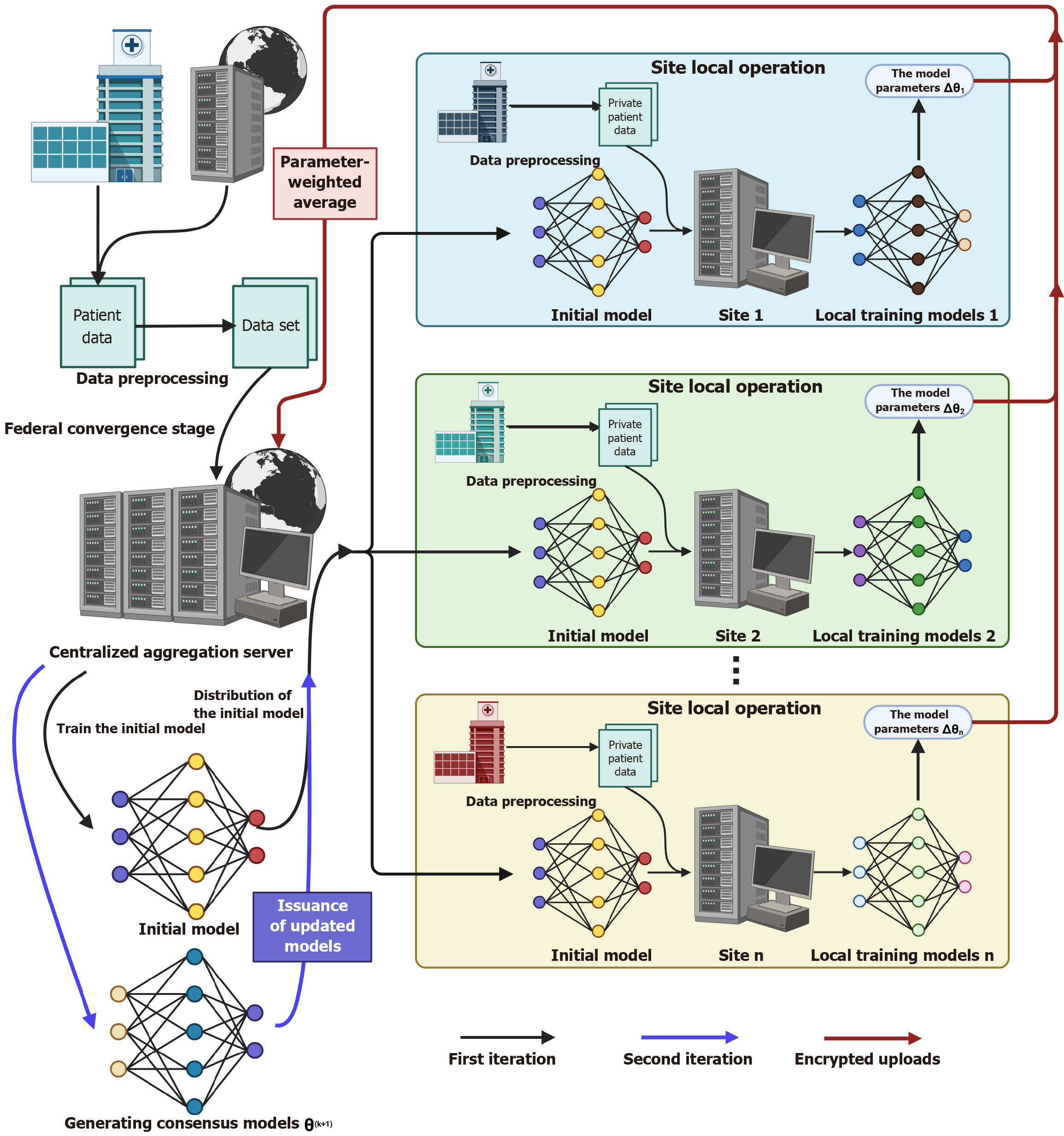Copyright
©The Author(s) 2025.
World J Gastroenterol. Jun 28, 2025; 31(24): 108021
Published online Jun 28, 2025. doi: 10.3748/wjg.v31.i24.108021
Published online Jun 28, 2025. doi: 10.3748/wjg.v31.i24.108021
Figure 3 Schematic diagram of the envisioned federated learning architecture for gastrointestinal applications.
In the federated convergence stage, the centralized aggregation server first generates an initial model, which is distributed to multiple independent sites (e.g., site 1, site 2, and site n). Each site performs data preprocessing on private gastrointestinal patient datasets and conducts local training using the initial model to produce local training models. To emphasize data privacy protection, model parameters (marked as Δθi) are encrypted during upload to the centralized aggregation server. The server adopts parameter-weighted average to aggregate these parameters, issue updated models, and promote iterative training (illustrated by the first and second iterations). This architecture not only protects the privacy of gastrointestinal patient data through decentralized data processing and encryption strategies but also enhances model generalization. By integrating heterogeneous gastrointestinal datasets from multiple sites for collaborative training, the final consensus model θ (k + 1) can better adapt to diverse clinical scenarios. As a key framework, federated learning enables privacy-preserving collaborative model optimization, holding substantial promise for advancing artificial intelligence applications in gastrointestinal research.
- Citation: Chen ZL, Wang C, Wang F. Revolutionizing gastroenterology and hepatology with artificial intelligence: From precision diagnosis to equitable healthcare through interdisciplinary practice. World J Gastroenterol 2025; 31(24): 108021
- URL: https://www.wjgnet.com/1007-9327/full/v31/i24/108021.htm
- DOI: https://dx.doi.org/10.3748/wjg.v31.i24.108021









